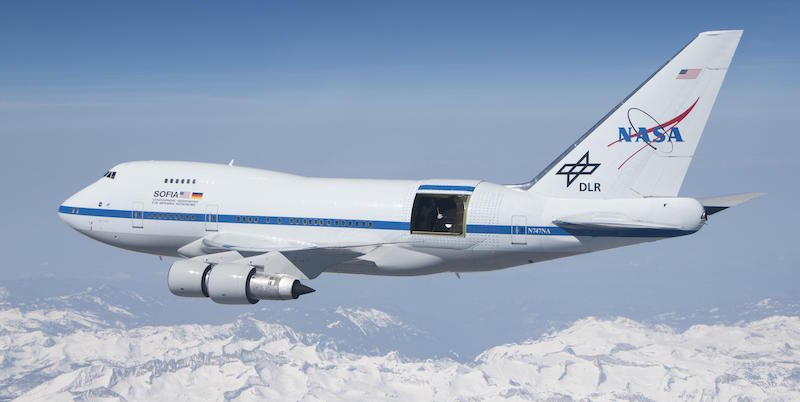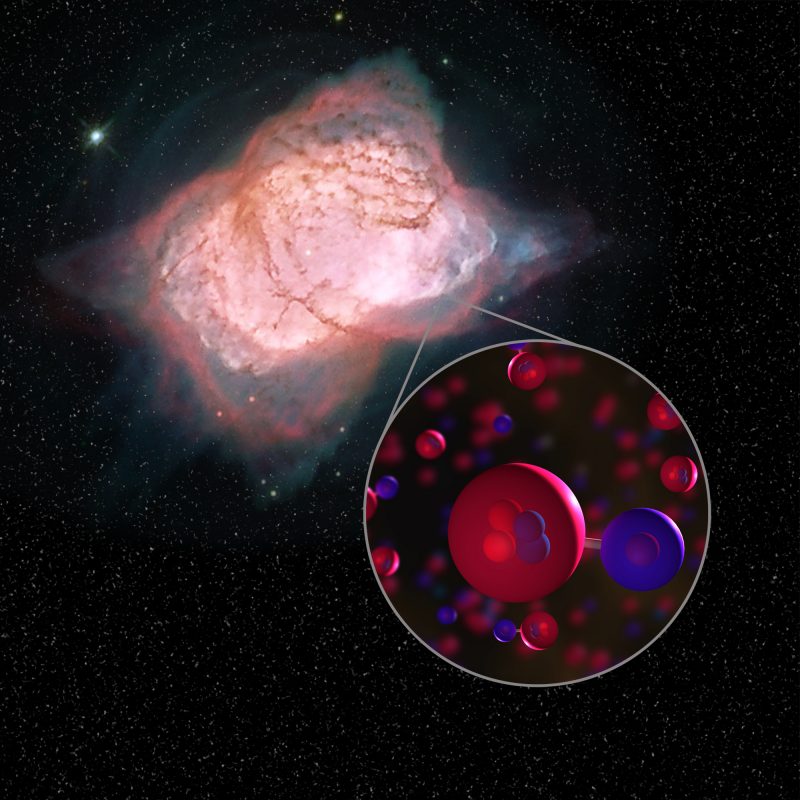Scientists have announced that the first type of molecule that ever formed in the universe has been detected in space for the first time, after decades of searching. A paper on the discovery was published April 17, 2019, in the peer-reviewed journal Nature.
The molecule, helium hydride, or HeH+, formed just after the Big Bang nearly 14 billion years ago, said scientists with Germany’s Max Planck Institute for Radioastronomy. The researchers discovered the molecule’s signature in our own Milky Way galaxy using NASA’s airborne SOFIA observatory, as the aircraft flew high above the Earth’s surface and pointed its instruments out into space.

When the universe was still very young, only a few kinds of atoms existed, mostly helium and hydrogen. Scientists believe that around 100,000 years after the Big Bang, helium and hydrogen combined to make a molecule for the first time. Scientists have inferred that helium hydride was this first, primordial molecule. The problem, though, is that scientists could not find helium hydride in space. Rolf Guesten of the Max Planck Institute for Radio Astronomy in Bonn, Germany, is lead author of the paper. Guesten said in a statement:
The lack of evidence of the very existence of helium hydride in interstellar space was a dilemma for astronomy for decades.
SOFIA found modern helium hydride in a planetary nebula, a remnant of what was once a sun-like star. Located 3,000 light-years away near the constellation Cygnus, the nebula – called NGC 7027 – has conditions that allow this mystery molecule to form. Harold Yorke is director of the SOFIA Science Center, in California’s Silicon Valley. Yorke said in a statement:
This molecule was lurking out there, but we needed the right instruments making observations in the right position — and SOFIA was able to do that perfectly.

Helium hydride is a finicky molecule, say the researchers. That’s because helium itself is a noble gas, making it very unlikely to combine with any other kind of atom. But in 1925, scientists were able to create the molecule in a laboratory by coaxing the helium to share one of its electrons with a hydrogen ion.
Then, in the late 1970s, scientists studying the planetary nebula called NGC 7027 thought that this environment might be just right to form helium hydride. But their observations were inconclusive. And although subsequent investigations hinted it could be there, the space telescopes used didn’t have the technology to pick out the signal of helium hydride from the all other molecules in the nebula.
In 2016, scientists turned to SOFIA. The aircraft, which flies up to 45,000 feet (13,700 meters) to make observations above Earth’s atmosphere, has a benefit space telescopes don’t — it returns after every flight. That means scientists can change instruments and install the latest technology. A recent upgrade to one of SOFIA’s instruments added the specific channel for helium hydride that previous telescopes did not have. The instrument works like a radio receiver. Scientists tune to the frequency of the molecule they’re searching for, similar to tuning an FM radio to the right station.
Guesten was on board SOFIA when helium hydride’s signal finally came through loud and clear. He said:
It was so exciting to be there, seeing helium hydride for the first time in the data. This brings a long search to a happy ending and eliminates doubts about our understanding of the underlying chemistry of the early universe.
Bottom line: For the first time, scientists have detected the signal of the first type of molecule that ever formed in the universe – helium hydride – in space.
Source: Astrophysical detection of the helium hydride ion HeH+











